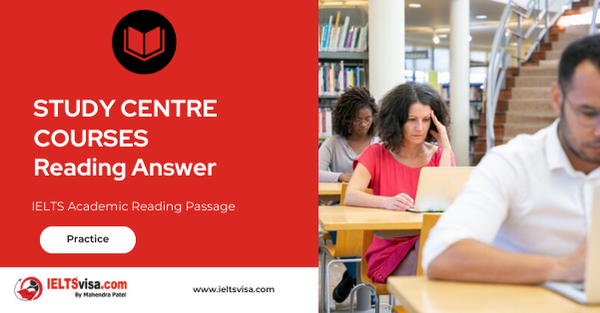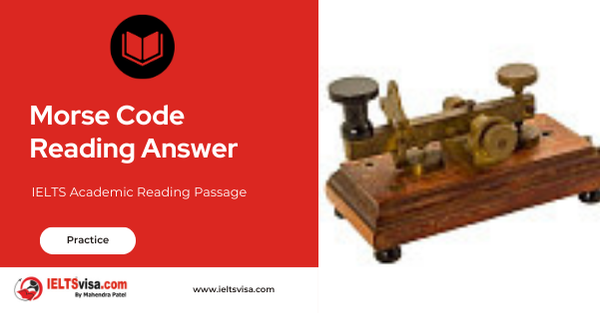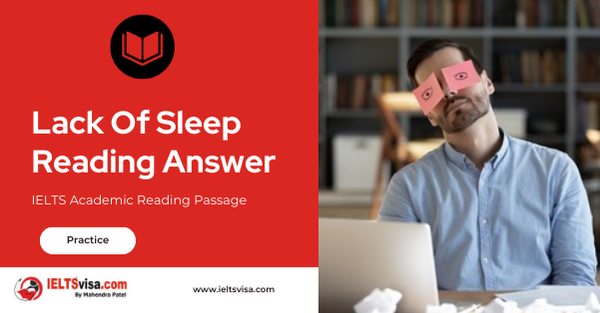Delivering The Goods Reading Answer
IELTS Academic Reading Passage
The vast expansion in international trade owes much to a revolution in the business of moving freight
A
International trade is growing at a startling pace. While the global economy has been expanding at a bit over 3% a year, the volume of trade has been rising at a compound annual rate of about twice that. Foreign products, from meat to machinery, play a more important role in almost every economy in the world, and foreign markets now tempt businesses that never much worried about sales beyond their nation’s borders.
B
What lies behind this explosion in international commerce? The general worldwide decline in trade barriers, such as customs duties and import quotas, is surely one explanation. The economic opening of countries that have traditionally been minor players is another. But one force behind the import-export boom has passed all but unnoticed: the rapidly falling cost of getting goods to market. Theoretically, in the world of trade, shipping costs do not matter. Goods, once they have been made, are assumed to move instantly and at no cost from place to place. The real world, however, is full of frictions. Cheap labour may make Chinese clothing competitive in America, but if delays in shipment lie up working capital and cause winter coats to arrive in spring, trade may lose its advantages.
C
At the turn of the 20th century, agriculture and manufacturing were the two most important sectors almost everywhere, accounting for about 70% of total output in Germany, Italy and France, and 40-50% in America, Britain and Japan. International commerce was therefore dominated by raw materials, such as wheat, wood and iron ore, or processed commodities, such as meat and steel. But these sorts of products are heavy and bulky and the cost of transporting them relatively high.
D
Countries still trade disproportionately with their geographic neighbours. Over time, however, world output has shitted into goods whose worth is unrelated to their size and weight. Today, it is finished manufactured products that dominate the flow of trade, and, thanks to technological advances such as lightweight components, manufactured goods themselves have tended to become lighter and less bulky. As a result, less transportation is required for every dollar’s worth of imports or exports.
E
To see how this influences trade, consider the business of making disk drives for computers. Most of the world’s disk-drive manufacturing is concentrated in South-east Asia. This is possible only because disk drives, while valuable, are small and light and so cost little to ship. Computer manufacturers in Japan or Texas will not face hugely bigger freight bills if they import drives from Singapore rather than purchasing them on the domestic market. Distance therefore poses no obstacle to the globalisation of the disk-drive industry.
F
This is even more true of the fast-growing information industries. Films and compact discs cost little to transport, even by aeroplane. Computer software can be ‘exported’ without ever loading it onto a ship, simply by transmitting it over telephone lines from one country to another, so freight rates and cargo-handling schedules become insignificant factors in deciding where to make the product. Businesses can locate based on other considerations, such as the availability of labour, while worrying less about the cost of delivering their output.
G
In many countries deregulation has helped to drive the process along. But, behind the scenes, a series of technological innovations known broadly as containerisation and intermodal transportation has led to swift productivity improvements in cargo-handling. Forty years ago, the process of exporting or importing involved a great many stages of handling, which risked portions of the shipment being damaged or stolen along the way. The invention of the container crane made it possible to load and unload containers without capsizing the ship and the adoption of standard container sizes allowed almost any box to be transported on any ship. By 1967, dual-purpose ships, carrying loose cargo in the hold* and containers on the deck, were giving way to all-container vessels that moved thousands of boxes at a time.
H
The shipping container transformed ocean shipping into a highly efficient, intensely competitive business. But getting the cargo to and from the dock was a different story. National governments, by and large, kept a much firmer hand on truck and railroad tariffs than on charges for ocean freight. This started changing, however, in the mid-1970s, when America began to deregulate its transportation industry. First airlines, then road hauliers and railways, were freed from restrictions on what they could carry, where they could haul it and what price they could charge. Big productivity gains resulted. Between 1985 and 1996, for example, America’s freight railways dramatically reduced their employment, trackage, and their fleets of locomotives – while increasing the amount of cargo they hauled. Europe’s railways have also shown marked, albeit smaller, productivity improvements.
I
In America the period of huge productivity gains in transportation may be almost over, but in most countries the process still has far to go. State ownership of railways and airlines, regulation of freight rates and toleration of anti-competitive practices, such as cargo-handling monopolies, all keep the cost of shipping unnecessarily high and deter international trade. Bringing these barriers down would help the world’s economies grow even closer.
Questions 1-4
Reading Passage has nine paragraphs, A-I.
Which paragraph contains the following information?
Write the correct letter, A-I, in boxes 1-4 on your answer sheet.
1. a suggestion for improving trade in the future
2. the effects of the introduction of electronic delivery
3. the similar cost involved in transporting a product from abroad or from a local supplier
4. the weakening relationship between the value of goods and the cost of their delivery
Questions 5-9
Do the following statements agree with the information given in Reading Passage? In boxes 5-9 on your answer sheet, write
TRUE if the statement agrees with the information
FALSE if the statement contradicts the information
NOT GIVEN if there is no information on this
5. International trade is increasing at a greater rate than the world economy.
6. Cheap labour guarantees effective trade conditions.
7. Japan imports more meat and steel than France.
8. Most countries continue to prefer to trade with nearby nations.
9. Small computer components are manufactured in Germany.
Questions 10-13
Complete the summary using the list of words, A-K, below.
Write the correct letter, A-K, in boxes 10-13 on your answer sheet.
THE TRANSPORT REVOLUTION
Modern cargo-handling methods have had a significant effect on 10……………………. as the business of moving freight around the world becomes increasingly streamlined.
Manufacturers of computers, for instance, are able to import 11…………………… from overseas, rather than having to rely on a local supplier.
The introduction of 12…………………….. has meant that bulk cargo can be safely and efficiently moved over long distances.
While international shipping is now efficient, there is still a need for governments to reduce 13………………………. in order to free up the domestic cargo sector.
|
A |
tariffs |
B |
components |
C container ships |
|
D |
output |
E |
employees |
F insurance costs |
|
G |
trade |
H |
freight |
I fares |

Solution For:Delivering The Goods Reading Answer
| 1. I | 8. TRUE |
| 2. F | 9. NOT GIVEN |
| 3. E | 10. G |
| 4. D | 11. B |
| 5. TRUE | 12. C |
| 6. FALSE | 13. A |
| 7. NOT GIVEN |
Review and Practice
- Regularly practice with IELTS reading samples and time yourself to get used to the pressure of the exam.
- Review your mistakes to understand where you went wrong and how to avoid similar errors in the future.
Our Books
Master IELTS Speaking Part 1
IELTS Writing Task 1 Book
IELTS Writing Task 2 Book
Delivering The Goods Reading Answer Explanation
Comin Soon
Practice IELTS Other Modules
IELTS Listening
The IELTS Listening test assesses how well you can understand spoken English in various contexts. It lasts about 30 minutes and is divided into four sections with a total of 40 questions. The listening tasks become increasingly difficult as the test progresses.
IELTS Academic Reading
The IELTS Academic Reading section assesses your ability to understand and interpret a variety of texts in academic settings. It is designed to evaluate a range of reading skills, including skimming for gist, reading for main ideas, reading for detail, understanding inferences, and recognizing a writer's opinions and arguments.
IELTS Speaking
The IELTS Speaking test assesses your ability to communicate in English on everyday topics. It lasts 11-14 minutes and consists of three parts: introduction, cue card, and a discussion based on the cue card topic.
IELTS General Reading
IELTS General Reading tests your ability to understand and interpret various types of texts. Here are some key areas and types of content you can expect to encounter in the reading section, along with tips for effective preparation.
IELTS Academic Writing Task 1
In IELTS Academic Writing Task 1, you are presented with a visual representation of information, such as graphs, charts, tables, or diagrams, and you are required to summarize, compare, or explain the data in your own words.
IELTS General Writing Task 1
In IELTS General Writing Task 1, you are required to write a letter based on a given situation. The letter can be formal, semi-formal, or informal, depending on the prompt. Here’s a breakdown of the key components to include in your letter
IELTS Academic Writing Task 2
In IELTS Academic Writing Task 2, you are required to write an essay in response to a question or topic. Here’s a guide to help you understand the essential elements of this task
IELTS Exam Tips
To succeed in the IELTS exam, practice regularly, familiarize yourself with the test format, improve your vocabulary, develop time management skills, and take mock tests to build confidence.
Grammer for IELTS
Grammar is the foundation of effective communication in English. Understanding tense usage, subject-verb agreement, and sentence structure enhances clarity and coherence in writing and speaking.
Vocabulary for IELTS
Vocabulary plays a crucial role in the IELTS (International English Language Testing System) exam, especially in the Speaking and Writing sections. Here’s an overview of why vocabulary is important and how it impacts your performance
RECENT IELTS SAMPLES QUESTIONS AND ANSWERS
Becoming An Expert Reading Answer
A Expertise is commitment coupled with creativity. Specifically, it is the commitment of...
STUDY CENTRE COURSES Reading Answer
SELF-STUDY TIPS AHowever difficult you find it to arrange your time, it will pay off in the...
The Extrinct Grass In Britain Reading Answer
A The British grass interrupted brome was said to be extinct, just like the Dodo. Called...
Morse Code Reading Answer
A. A new satellite-based system is being implemented to replace Morse code for sending...
Magnetic Therapy Reading Answer
AMagnetic therapy, which is a $5-billion market worldwide, is a form of alternative medicine...
Lack Of Sleep Reading Answer
Section A It is estimated that the average man or woman needs between seven-and-a-half and...













